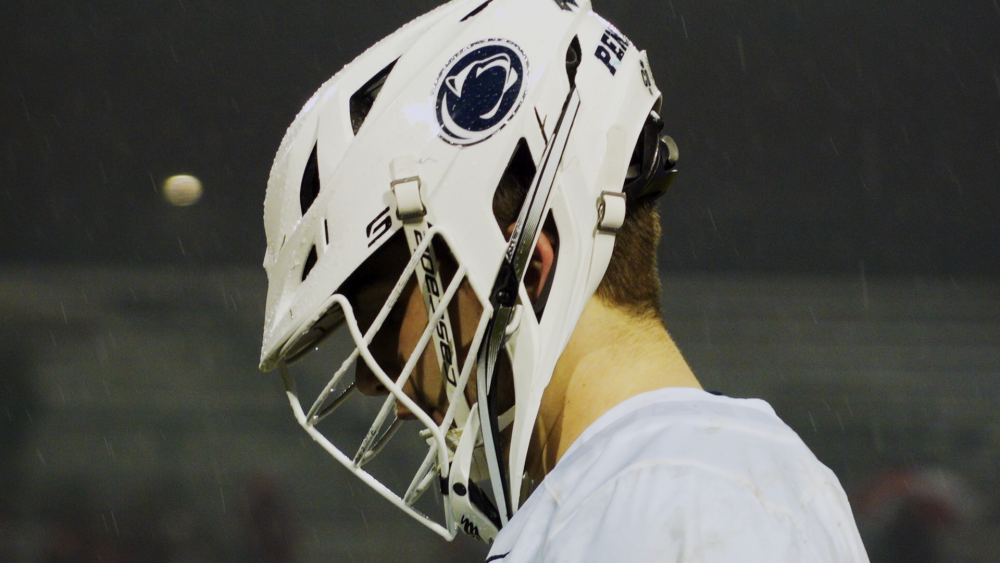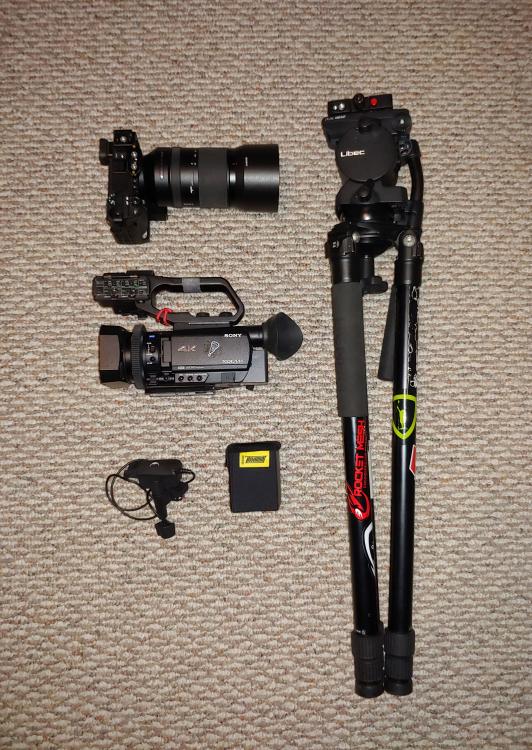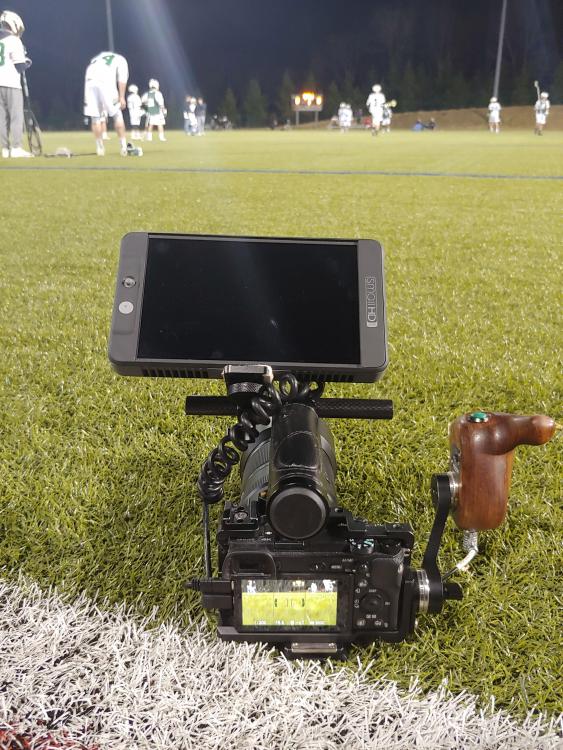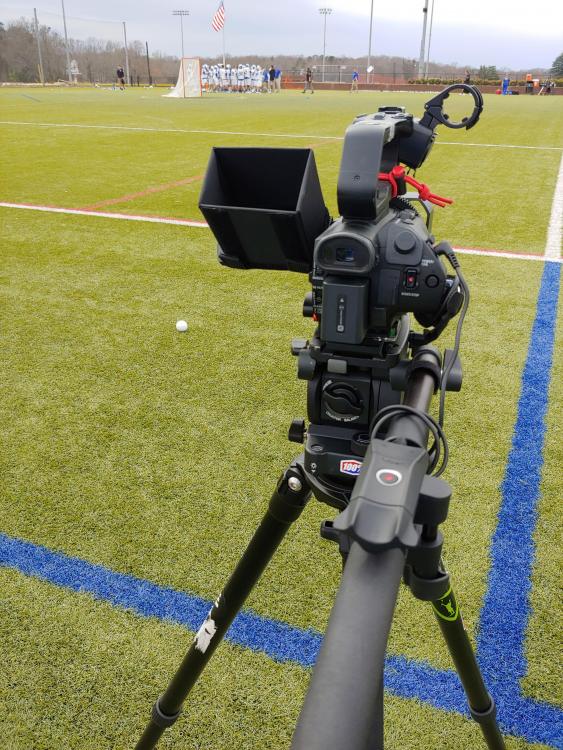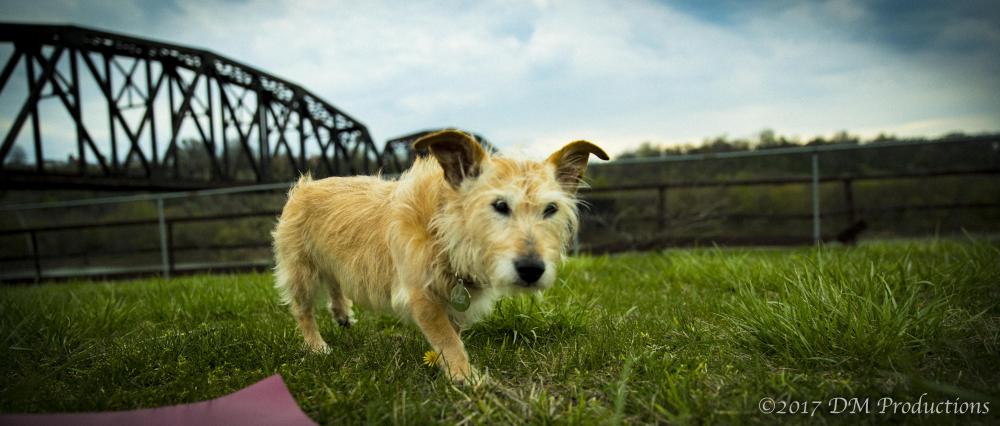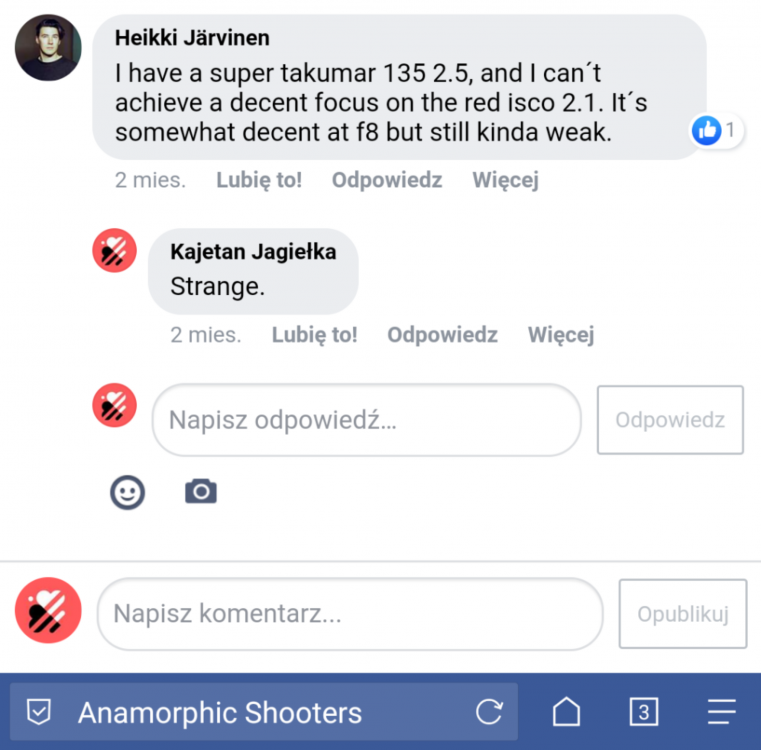Leaderboard
Popular Content
Showing content with the highest reputation on 05/05/2019 in all areas
-

Sports videography
webrunner5 and 4 others reacted to Mako Sports for a topic
I'm a big sports guy so this thread is exciting for me. For you i'd recommend something like this but for a 3.2'' GH5 screen - https://www.amazon.com/dp/B007POA58G?tag=makspo-20 I shoot lacrosse mainly (High school, college, and pro) as well as pro soccer. I don't work for broadcast so most of my stuff goes direct to web. Instagram and YouTube. I usually film action tight but not like NFL Films 600mm & 800mm Lens tight. So for me 150mm - 400mm is where I live. My kit is as follows.. A Camera/Daylight rig Sony PXW Z90 with this I only ever shoot 4K 24 and 1080 @ 120fps I purchased the Z90 because I started to get into more documentary stuff. For anyone that shoots sports knows you don't have time to change lenses when going from on field action 300mm to a wide 29mm for a huddle with audio. So i've found having that built in lens to be invaluable. This setup lives on a tripod which is a Libec RH25D Fluid head on the Benro A373T Legs. Also I run a lanc controller so I can control pan, tilt, and zoom with my right hand. With this setup it takes me less than a minute to get completely setup for a game wheres if I was using a mirrorless body or S35 ILC it would be something like 2 or 3 minutes. Also I get a 29 - 350mm F4 lens in front of a 1 inch sensor with 2 XLR's for when I need game audio. Which is usually a shotgun going into 1 channel and sometimes a wireless lav with either a coach or player mic'ed up into the other channel. Pros - Great image quality, a lot easier to use, faster to setup, built in lens, dual XLR's. Cons - Terrible in lowlight, autofocus in 120fps slowmotion switches to contrast instead of phase detect. No audio in slowmotion and 240fps is manual focus only. B Camera/Low light rig Sony A6300 + Sony 70 - 300 FE + Smallhd 701 I've had this setup for almost 3 years and its been a trooper. I shoot the same frame rates and resolutions as the Z90. @ 3200 ISO I still get a rather clean image and with Noise Reduction either Magic Bullet Denoiser 3 (Back when I used Premiere) and Now Resolve Studio I can do 6400 ISO. With this setup I have better lowlight performance, shallower DOF, and usually better autofocus in 120fps. I don't love manual focusing with the 70-300 but I can do it if need be. I thing I like is the focus hold button which I can use if I see another player or Ref that's about to walk in front of my shot. This setup I always run on a monopod, also I can use it for photos which is always nice. Pros - Good in lowlight, sound in 120fps, focus hold button due to lens, can take photos, Cons - The color straight out of camera isn't as nice as the Z90, No 10bit like the Z90, mirrorless camera ergos aren't as nice as a legit video camera. I have attached some photos and link to my reel to see this equipment in practice.5 points -
Yeah, or the FZ2500 to match @kye ‘s GH5. The FZ2500 is a great little camera and it has one of the coolest features that some old Super 8 cameras had... touch button slow motion... so you could shoot at 24p, then push and hold a button and it goes into slow motion, or fast motion if that’s your thing, until you let go of the button. Plus the Tracking AF isn’t... horrible.4 points
-

Is 4K Worth The Tradeoff?
webrunner5 and 3 others reacted to IronFilm for a topic
So we're making an argument for 720 now?4 points -
Eos R finally closer to it's actual value
ntblowz and 3 others reacted to newfoundmass for a topic
Most consumers don't know anything about sensor size, etc. It's really only in this prosumer/professional bubble that people are obsessed with full frame cameras. Meanwhile I'm happy over here with my M43 and next month is set to be my most profitable month ever!4 points -

Sports videography
kye and 2 others reacted to webrunner5 for a topic
I can't help but thinking using a camera like the RX10 mk IV is not a better, easier way to just go about it. Why worry about lenses. All in one stuff is, even a camcorder is designed for a reason, potability with less hassle. It is why ENG cameras are used, ease of use in fast changing situations. Who needs the bulk and hassle on family outings. You can even go backwards on models with the RX10 and have a constant F stop, and ND filters. I doubt you need all the reach of the latest model lens wise.3 points -

Is 4K Worth The Tradeoff?
newfoundmass and 2 others reacted to webrunner5 for a topic
I don't think the argument ought to be 1080p versus 4K, it ought to be how sharp is the output of the final product. It is like the difference between a Canon C100 1080p, and say a Canon 5D mk II, or even a 80D. Heck the C100 looks like 4K because it is automatically downsampled from 4K. Night and day difference in 1080p. The A7s versus the A6300 is another good example. Sharpness is what determines resolution nearly as much as the resolution its self. I know it is more complicated than that, but you get my point... I hope lol. ? Heck even brigtness determines it a lot. Look a that latest Game of Thrones thing. Hell it is so dark it could have been 12K and it would not have made a crap. You can't see resolution when you can't even see the output.3 points -

Sports videography
Mark Romero 2 and one other reacted to Mako Sports for a topic
I considered the RX10 IV a few times ended up going with the Z90 for the built in ND filters, however that RX10 600mm F4 zoom is no joke.2 points -

Accsoon CineEYE wireless video to your phone
webrunner5 and one other reacted to Emanuel for a topic
No more complaints on the P4K monitor stuck in-body... I guess ; -) LOL Add one of my fav phones today and you'll have an instantaneous movie theater wherever you want: Live TV now can reasonably mean live cinema! : -D2 points -

Sports videography
webrunner5 and one other reacted to kye for a topic
I've been toying with the idea of a monopod for some time now through my travel film-making, but it never quite got over the line, but it makes all kinds of sense for this. For my situation right now I think I'd go a slightly different approach and get a tiny monopod and just use it without a fluid-head and just on my lap, as I can adjust the height to suit. I wonder what the cheapest monopod available is, I suspect I might find out very soon. Thank you! That might work, although I do like the additional point of contact that the eyepiece / my forehead provides. I just worked out that I have enough adapters to play cinematography legos and create this, which might work: I'd trim down the flash bracket (I have several) but it sure gets the mic out of the way. I've spent so much time in the mindset of hand-held travel where less is more to the point that as little as possible is almost everything, I'd forgotten that at football my camera is so large that making it larger won't really have any downsides except as it applies to my using it. That is seriously impressive! WOW!! Great stuff How do you decide which shots to get in 4k24 and 1080p120? I have battled with the quality of 4K vs the lack of quality with slow-mo for the last two cameras I've owned and haven't really gotten a good rationale on when to use what. I normally shoot 4k25 10-bit on the GH5 but this morning I shot 4k50 8-bit so we'll see how that goes when I come to edit/grade it. I also went to my first rodeo last night, which was an absolute blast, and I shot that in 4k50 8-bit too, at night under flood-lights, so we'll see how that turns out. The 135mm was looking straight into a floodlight and being vintage it raised the black levels a heap, so we'll see how I get around grading an ultra-low contrast 8-bit image. The riders should look pretty good in slow-motion though, and I'm pretty sure I got some really nice shots. There was some serious action - rodeos are no joke!2 points -
Anyone used the Takumar 135mm f2.5 as a taking lens?
Andrew Clunie and one other reacted to Bioskop.Inc for a topic
This is the one Takumar that I haven't used with an Iscorama, all the others are some of my favourite lenses to use with an anamorphic attachment. I do use the Tair 11a 135mm f2.8 & it works amazingly well, in fact these longer focal lengths give you better image quality than wider lenses do. The one thing to watch out for when using vintage lenses is to test out where infinity really is - by this I mean that a lot of adaptors play safe & the reading of infinity on the lens isn't always spot on, so you might have to dial it back a fraction. I have quite a few M42 lenses that behave this way, which might be why some people think they can't get a sharp/clear image when using an anamorphic adaptor. So always check the real Infinity mark of your taking lens (add some tape to secure it or make a mark on the taking lens, so if it moves you can adjust quickly) & then add your adaptor - you should have no troubles. NB. I find the Takumar's are some of the sharpest vintage taking lenses to use with an Iscorama & they are normally more reliable (in terms of quality control) than a lot of other brands, especially the Russain lenses.2 points -

Awesome filmmaking doesn't need a bid budget or fancy camera equipment. Here is proof.
kye and one other reacted to Amazeballs for a topic
2 points -

Blackmagic Pocket Cinema Camera 4K
webrunner5 and one other reacted to kye for a topic
The rig is nice. what I liked best is that he made a video that had great editing, showing the important things but not wasting any more time on long-winded tangents like most reviewers2 points -

Game of Thrones ... because why not
webrunner5 and one other reacted to Novim for a topic
Probably true. But anyway, the video (even so called documentary) could be a mixture of the real and the ilusion (in technical terms). An example: I work with 3 teams of my students - within the course on "Citizen Journalism and Video Reporting" - on some videos: topics are volunteers action (cleaning the neibourghood, helping hendicaped or older people, and similar). Students are supposed to shoot with their mobile phones, both the theme itself and to shoot them shooting the theme. Another team of students (and myself) also shoot in parallel with "pro" cameras (P4K, Canon 200C, Canon XC10). And in post, 80% of materials are from these "pro" cameras. They give us - technically and educationally - better shots. The general public on TV will see only the mobiles shooting. ?2 points -

Is 4K Worth The Tradeoff?
webrunner5 and one other reacted to kaylee for a topic
that was a huge revelation after making my short in 1080p: i wish id shot a bunch of it just a little wider, and then cropped in during post. even if the extra pixels just go to straightening out a horizon line, it wouldve been super useful to have that which is huge, bc several shots that i stabilized in post were ones that i didnt plan on stabilizing at all. 4ks great for adding camera movement, as well. lots of post stuff but this is my take for something thats grading/vfx heavy, so if you have a fast turnaround its a whole different story2 points -
Is 4K Worth The Tradeoff?
webrunner5 and one other reacted to thebrothersthre3 for a topic
I got a 4k monitor thinking I'd be amazed, but I truly can't tell a difference between it and my 1080 monitor, its slightly larger than my 1080 monitor though.2 points -

Is 4K Worth The Tradeoff?
Emanuel and one other reacted to Amazeballs for a topic
I agree with ppl in the comments - it depends on what type of scene you shoot. If it is something with a lot of motion and shallow dof, then not that much. But if you shoot with more dof and less blur, you will clearly see it. Depends on lighting as well. I can see it very well in those scenes. Plus, there is always a post factor - do you want to be able to crop/zoom your video, push your grade more or less. Ofc there is a downside to 4k, a tax in disk space and computer power required to process and edit it smoothly.2 points -
Its not just calibration. Many people watch these tv series on their phones and tablets. If they are OLED, their max brightness is very low (how many of total mobile viewers have Samsung flagships?), and if they are LCD, glowing blacks make the whole thing horribly flat at max brightness. And then we have compression issues. In dragon fighting scene, it was like watching a 9gag clip in its gif days!2 points
-
As I was watching it I just assumed they had their special effects budget cut and so decided to make everything dark and concentrate on the foley.2 points
-
And we're supposed to "see" the damn signature.2 points
-

Accsoon CineEYE wireless video to your phone
webrunner5 and one other reacted to BTM_Pix for a topic
And is if by magic, a mobile NDI viewing app shows up the very next day ! https://itunes.apple.com/us/app/ndi-monitor/id1196221514?ls=1&mt=82 points -
Game of Thrones ... because why not
IronFilm and one other reacted to frontfocus for a topic
I love how he claims it's the iPads and everything else fault. So, if you can't watch it on an iPad, with factory calibrated screen, covering DCI P3, working with variable frame rate to match the content, offering over 500 nit brightness and extremely good contrast what should we get? 4000$ HDR Oled Screens? In the end it was just too dark and HBO made it even worse with their crappy compression. Get your content delivery sorted and then start blaming customers!2 points -

Off Topic - Hildy Mi Vida
thebrothersthre3 reacted to DBounce for a topic
Just wanted to post this up here in remembrance of my faithful friend Hildy (my Hildoogans). It's probably not shot well and I'm sure the dynamic range is poor,... but I'll miss her anyway. She kept me company and was a good soul. She gave all the love she could to us and she was a beloved member of our family. We will always miss you Hildy.1 point -
What’s really cool about it is that you can record your son in regular motion and the push the button in the middle of the recording and it will slide into slow motion during the same recording.1 point
-
Sports videography
kye reacted to newfoundmass for a topic
I shoot a lot of sports with the GH5 and G85, mostly handheld and up close to the action: My go to lens for handheld is the Panasonic 12-35mm f/ 2.8. I use single point auto focus and it works really well. I find it to be very reliable, and the f/2.8 handles the less than ideal lighting conditions I'm usually shooting in pretty well. I use a cage with top handle and wooden grip. With dual IS I don't need a monopod or any other support, it's wonderful. I'm literally running around a wrestling ring and I'm still blown away at how stable my shots are. My "hard camera" shot is a G85 with kit lens. I'm saving up to get another 12-35 and the 35-100 f/2.8 to match. After next month I should be in a place to get both. For a tripod I use the Magnus VT-350; it's cheap and far from the best tripod BUT it goes up to 82" which gives it considerably more height than most tripods. I just wish that you could replace the tripod head. For audio I use the Rode Video Micro on the GH5, but it's mostly for scratch audio and crowd noise since commentary is being recorded live into a Zoom recorder that is also feeding audio into the G85. I also usually put a Zoom H1 under the ring to make the moves sound better. For me external monitors aren't ideal for sports. The lag for HDMI ones, though slight, is still enough to cause issues. I should note that I also shoot events from start to finish as opposed to clips, since I'm editing the entire event to be streamed online or on DVD/Blu Ray (yes that still is a thing!) So shooting slow motion, etc normally isn't in the cards. For your use I'd consider maybe a B4 lens with a x2 extender as a zoom option? Those can get great reach.1 point -

How Can I Be A Young Director?
kye reacted to Zach Goodwin2 for a topic
@kye I promise you I'll get to Snowfun's documentary idea soon. I just got out for the summer.1 point -
Nikon 75-150mm f/3.5 Series E http://www.ishootshows.com/2011/06/21/review-nikon-75-150mm-f3-5-series-e/1 point
-

Off Topic - Hildy Mi Vida
DBounce reacted to heart0less for a topic
So sorry to hear that. It surely evoked emotions, that's more important than all the technical stuff.1 point -
Is 4K Worth The Tradeoff?
kaylee reacted to Mark Romero 2 for a topic
see... Canon is ahead of the game with their 120fps at 720p.1 point -

Off Topic - Hildy Mi Vida
webrunner5 reacted to DBounce for a topic
https://www.dropbox.com/s/7x12cionrc6dhj9/2018-01-07 21.29.30.jpg?dl=01 point -

How Can I Be A Young Director?
kaylee reacted to Zach Goodwin2 for a topic
@kye I have been taking photos lately.1 point -

Accsoon CineEYE wireless video to your phone
webrunner5 reacted to BTM_Pix for a topic
The implementation costs are virtually free compared to even a couple of years ago and the possibilities with the flexibility it offers are amazing for low cost broadcasting. Even things like the app versions that turn your smartphone into an NDI camera could be a game changer for on the spot remote reporting. What it can do inside something like vMix is incredible particularly when you consider you can have this sort of capability on a laptop. When you consider the extent of the patchbays, switches and interfacing you'd need just to handle the input and output source routing that he has at his disposal in this video it is pretty mind blowing to old gits like us! Then when you add in a Vset3D system, which also uses NDI for its inputs and outputs, on the same network you can be integrating a realtime virtual set system for the price of another gaming computer and the $350 price of the software.1 point -
Is 4K Worth The Tradeoff?
webrunner5 reacted to dbp for a topic
Yep, this. It's an interesting "all things being equal" discussion, but it rarely is. I'd rather shoot 1080p with the C100 or the Blackmagic pocket than 4K with many cameras. And this may be blasphemous, but I'm much less keen on the really heavy lesser compressed codecs in 4K. The storage space and media requirements are just too much. I'll be happy with my 150mps on my GH5.1 point -

Is 4K Worth The Tradeoff?
KnightsFan reacted to IronFilm for a topic
Yup, who here wouldn't rather shoot with an Arri Alexa in 1080 than a RED ONE at 4K?1 point -
As NDI is a compressed format, its role for most people on here will primarily be for wireless monitoring. The purpose of NDI is a low loss, low latency method of distributing signals within a network infrastructure and it can handle anything up to 4K60p with latency of 1 frame. Once you have encoded the signal (and standalone Newtek HDMI>NDI converters are around $450) and it is inside your network it can be displayed and/or processed by any device on the network capable of reading it as though it was a physical connection. For our monitoring application that means that we can display it on a mobile device, a laptop or a dedicated monitor in the case of the Ninja V or multiple combinations. The distance over which we can monitor the signal from our camera is only limited by our network infrastructure. That this can also extend to cloud based NDI solutions means that that reach can as easily be global as it is local. The real power of NDI is for live production where you can cheaply and easily create multi camera and multi source productions without the need for big hardware switchers and complex infrastructure for bringing in cameras and remote sources. For example, software switcher/production systems such as vMix (which people typically run on gaming laptops for portability) have plug-ins that see and use any NDI source on the network it is attached to as though it was a physical input so now you aren't limited to how many cameras you can use by the physical USB/Lightning ports you can attach converters to. You also aren't limited by how you have to use those inputs either in terms of cable length as once you have converted the camera signal into NDI at the camera end then you can run the signal without loss to the other side of the world if you want to. And this capability is being used with cloud NDI to remotely produce multi camera events from hundreds of miles away without huge trucks in the stadium car park or satellite links. NDI can also be used as an output format for computers so that these can be used as sources for graphics etc without having to use scan converters and again can be brought in from anywhere in the world in broadcast quality with minimal latency. NDI can also be used as an input/output format for Skype so remote guests can be brought into shows directly. So, whilst wireless monitoring is one application of NDI, it really is the tip of the iceberg of what it can do A bit more of a primer here from Epiphan who incorporate it into their producta. https://www.epiphan.com/blog/ndi-ndihx-network-video-production1 point
-
When I started out I got this Yunteng as my first "video" monopod: https://www.aliexpress.com/item/Yunteng-288-Camera-Monopod-Fluid-Pan-Head-Unipod-Holder-For-Canon-Nikon-Camera/32502452781.html It is ok, certainly I feel the best you can get for its price! Remember at 1080 you're only resolving 2 megapixels, even at 4K you don't exactly need the sharpest of sharp lenses. And Canikon/Pentax/Minolta constant F stop zoom lens from 1990's onward I'd say is on average a good quality lens. And even equivalent third party lenses from 2000's onward are often as well.1 point
-
I think you nailed it, but indirectly. @Zach Goodwin2 Film school does provide you with a great network, and film is definitely about who you know, but the other thing film school gives you is..... Motivation to actually do the things that the internet will tell you. I can tell you to make lots of little films and learn from them (in fact, I did, because that's what the D4Darious video I posted above says to do), and I can tell you to pick a film and to analyse it shot by shot, noticing the structure and working out if it's three acts or not, noticing which shots are wides / mediums / closeups, and what relationship they have to the plot, and the use of colour, symbolism, the communication of the passage of time, then camera angles, lighting analysis, camera movement, blocking, sound design, sound effects, blah blah blah... but you won't do it. and you won't do it because it's not 25% of your mark, due by Tuesday at 4pm, and you lose 20% for every day it's late! You just won't do it. The only advice worth anything is advice that you take. A huge number of them. Google will tell you all about it. Also, there is a ton of people who say that photography get them through a difficult time in their lives (people dying, sickness, divorce, loneliness, etc) and many say that it saved their lives by giving them an outlet. BTW, it doesn't really matter what you ask - the answer to the question "how many people who like <insert random thing here> struggle with mental conditions" is the same - it's huge. The struggle is real but you're not alone.1 point
-

Is 4K Worth The Tradeoff?
webrunner5 reacted to Emanuel for a topic
Something missing here is the fact (or not) about the sensor native resolution used, as well, color depth and bit rate as for instance. That equation counts much more than some other nonsense math for the subject matter strictly based on 4K vs 1080p or 720p acquisition. There are other variables completely ignored over here on this discussion.1 point -

Anyone used the Takumar 135mm f2.5 as a taking lens?
Andrew Clunie reacted to heart0less for a topic
Yeah, seems like it, to be honest. I have a Pentacon 135/2.8 and even wide open it is okay.1 point -

Anyone used the Takumar 135mm f2.5 as a taking lens?
Andrew Clunie reacted to heart0less for a topic
1 point -

Full frame rival sales figures = grim reading for everyone vs Sony
webrunner5 reacted to Amazeballs for a topic
That lens alone is the reason I am frequently thinking of switching from GH5 to Sony A7 ecosystem. I am waiting A7S3 and GH6 news cos that will matter a lot. but lens wise Sony wins very heavily. Panasonic S1 lenses are abusrdly expensive and in a shallow number, upcoming M43 10-25 1.7 is rummored to be 2500$ which is fucking insane. But Sony Has Tamron 17-28 and 28-75 plus lots of other budget and unique lenses like Samyang 85 1.4 or Sony GM 24 1.4. MFT ot L-mount have nothing even close to that. Sony is just crushing everyone in this department. Yes I love Panasonic ergonomics, IBIS and some other stuff. but also I hate to swtich lenses ?1 point -
Eos R finally closer to it's actual value
kaylee reacted to Video Hummus for a topic
But...those are crop sensor cameras...it can't be true. I don't accept it. Full frame...1 point -
Game of Thrones ... because why not
kaylee reacted to thebrothersthre3 for a topic
I think its just a publicity stunt.1 point -
Why shoud anyone "has to accept" someone's style? I could accept that some DP is trying to have his or her "style" or "signature" (and everybode has a "signature", that is a lousy metaphor for "being creative"), but I could also see that "style" to be wrong or bad. Or, more pricisely, in this case I hardly can "see" anything, let alone a "style". Especially when he arrogantly accused viewers and their TVs for this failure. Real creators are humble and attentive both to their craft and their public. So, I wouldn't be so sure that this DP "obviously knows what he's doing" - he was a DP of an entertainment TV series broadcasted by Net, and he should be aware that - just techically, nor "artistically" - the picture quality depends on many other conditions. If he did that as a feature film for theater, then the case would be different.1 point
-
Nikon Z6 features 4K N-LOG, 10bit HDMI output and 120fps 1080p
IronFilm reacted to thebrothersthre3 for a topic
I think it would be selling better if they had included internal 4k 60p or 10 bit internal. At its price point it would really put itself ahead of Canon, Sony, and Panasonic.1 point -
Nikon Z6 features 4K N-LOG, 10bit HDMI output and 120fps 1080p
IronFilm reacted to thebrothersthre3 for a topic
The Z6 is a great leap forward for sure. People don't appreciate things once they come along there is always something else on the horizon.1 point -
Most people have been hostile in response to Nikon Z6 and it doing 12 bit Raw external. Why? That should be a good thing for everyone. I know for a fact the Z6 4K video even at 8 bit is better then the A7III's video and I know for a fact that it compares to the C200 that was used at the same place with the same talent. That's not saying the Z6 is better or even as good but just what I can tell you based on footage between the two cameras. As far as having other cameras that do decent 4K comment. What? and what cameras? The GH5 does very good 4K but at what coast with the speed booster and glass you have to buy. The P4K is great but went I went to order one no-one had the P4K in stock. Sony's 4K sucks, Fuji no and Panasonic S1 is great but is even priced higher then the Z6 by over $1,000. The EOS R looks good but the 1.8 crop shouldn't even be happening and no way they get away with that in the next builds.1 point
-
Eos R finally closer to it's actual value
IronFilm reacted to ade towell for a topic
How did any of you lot manage in film production a few years ago, AF has only just become semi reliable? You all talk like you can't work without it? I'd say the RS is another major issue with the Eos-r - I've tried it and it is very noticeable and no you don't have to whip pan to see it. I had the Sony a6300 and I don't want to have to be so limited in how I move a camera again1 point -
1 point
-
1 point

